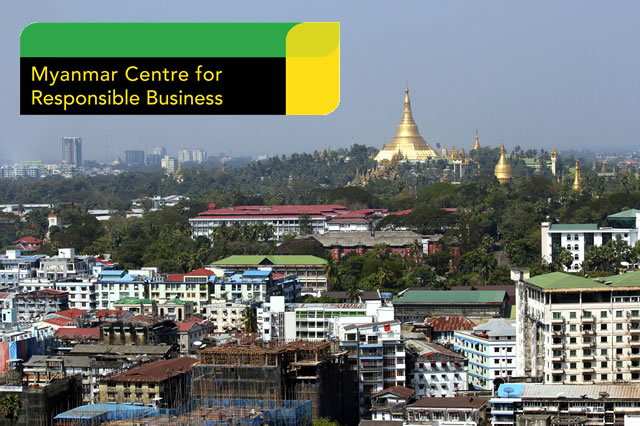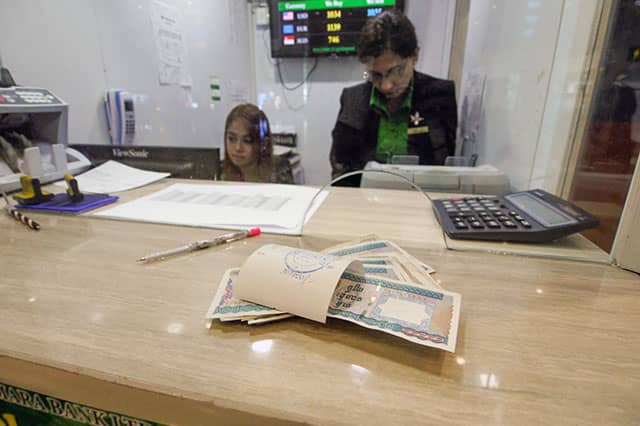What Have We Achieved So Far? Reflections on 2nd anniversary of the Myanmar Centre for Responsible Business

Commentary by John Morrison, Executive Director of the Institute for Human Rights and Business.
2015 is a big year for Myanmar, with Parliamentary elections due in November after which the next President will be chosen. Experts suggest we can expect the election process to be generally free and fair, albeit under the Constitution Daw Aung San Suu Kyi is forbidden from holding the office of President and 25% of parliamentary seats will remain with serving military officers.
Still, it is remarkable how much has happened since 2012 as well as how many challenges remain. While there is good reason to be hopeful about the future of Myanmar, recent violence surrounding student protests highlights that the stakes are still very high, not least in human rights terms.
It is nearly two years since we established the Myanmar Centre for Responsible Business (MCRB) with our partners at the Danish Institute for Human Rights. We said at the time, and will say again, that our work does not seek to “pick on Myanmar” but rather to remind governments and businesses of the international commitments they have made and help encourage sustainable trade and business – sustainable both in social and commercial terms. In fact, many of the challenges facing Myanmar are relevant elsewhere and undoubtedly transferable to the model of local centres on responsible business we are helping develop in other regions.
My recent visit to Myanmar was the first since Vicky Bowman’s appointment as MCRB Director and the opening of the Yangon office, although I had visited several times during the 2011-12 establishment phase and have been actively involved in the process since. Vicky is known to many in Myanmar not only as a former British Ambassador to the country (the youngest female ambassador in British history) but also for her own human rights advocacy.
Our programme during my stay in Myanmar was tightly packed. We met donors as well as senior diplomats from China and Japan; took part in anti-bribery training; toured a major bottling plant in Hmawbi; participated in a day long civil society meeting on disclosure, partnering with the Business and Human Rights Resource Centre (BHRRC); attended a public debate at the British Council for over 100 participants; discussed ongoing work on the ICT Sector-Wide Impact Assessment (SWIA) and potential agriculture mining sector work; and traveled for a three-day field mission to the southeastern town of Dawei (capital of Tanintharyi Region close to the Thai border).
Our stay in Dawei was packed as well with roundtables with local businesses and NGOs respectively; a visit to the site of the proposed Special Economic Zone (SEZ); met the monk of a village that had resisted resettlement and three others who had fled their relocation houses to leave a ghost town; and traveled to Heinda mine up in the mountains run by a Thai company where the waste water and silt from the mine had polluted and silted up the stream and brought more than a foot of toxic mud into the nearby village.
Otherwise, it was rubber, coconut, cashew and betel nut plantations (all of which blended into the landscape much better than palm oil, it seemed to me, also allowing for small-scale farming and livestock to run alongside). And yes, we needed to visit nearby Maungmagan beach to assess the impact to date of tourism, still catering mainly to Myanmar visitors although a few intrepid foreigners make it down there, and a French-Burmese couple have set up simple accommodation in a coconut grove.
All of this might be about to change, big time, with plans for pipelines, a deep-sea port, a petrochemical complex, and even a railway across the border to Thailand, Cambodia and Vietnam in addition to the SEZ itself. Even some of the local business representatives seemed very shaky on all the details, and local civil society feels very poorly consulted and therefore is in opposition to most aspects of these plans. It is unlikely that the Ital-Thai development company will be able to pull any of it off without a surge of major (most likely Japanese) investment.
Despite the useful firsthand contact with so many different stakeholders, the bigger question I’ve asked myself since my visit is: So how do we know if we are making progress? First, it is clear to me that MCRB is firing on many cylinders. Its initiative to rank local companies on their performance (Transparency in Myanmar Enterprises or TiME) intrigued both the international companies I spoke to and the embassies. It seems the need to “know your local business partner” is one of the main drivers for foreign investors and one where MCRB is now very well positioned. And importantly, the TiME project continues to be a great way to engage Myanmar businesses in improving their own transparency with the public. Equally important, our joint work to look in detail at the potential and actual human rights impacts of specific industry sectors through our SWIAs programme has also formed a solid basis for ongoing local engagement. I heard good things about the Oil and Gas sector stakeholder meeting that my colleague Margaret Wachenfeld participated in during January, and the Tourism SWIA seems to have opened opportunities for similar engagement.
One question in my head before this visit was how local civil society perceived MCRB. I was encouraged to find that my colleagues’ efforts, including on the SWIAs and TiME, have convinced many organizations that we are indeed serious about disclosure and transparency – and that our activities benefit civil society as much as they do business or government. MCRB has clearly earned a significant profile and level of trust from all sides. And in terms of real impact, it was gratifying to see that the most frequent and complete responses to the recent BHRRC survey of international companies were in the three sectors where we have been active with SWIAs (Oil and Gas, Tourism and ICT). This might be dismissed as chance had several respondents not cited to BHRRC the relevant SWIA as one of the main reasons they had developed in-country human rights policies.
One strategic priority moving forward, and an area where we can build and then maximize our leverage, involves engaging with the three SEZs and the Asian investments they are bringing in: Kyaukphyu (in Rakhine State and where the China gas and oil pipeline starts from a Korean-run offshore field, Thilawa near Yangon (where we are already engaged with JICA and helping to catalyze a multi-stakeholder approach) and Dawei, dominated by Thailand but with the prospect of more Japanese involvement. Each SEZ has a different history and stakeholders, but land issues are common to all.
This is not to neglect the significance of western investment in the SEZs - in Thilawa the presence of US aluminum can company BallCorp, hoping to supply to Coke and therefore bound by the company’s no land grab policy - and apparel factories hoping to supply to Europe and the US. But it is clear that we need to develop more leverage where it is needed most: intra-Asian investment. Who will do the deal with the Military-owned dominant beer company with 80% market share (the same military holding Company criticized in the recent Amnesty International report on the Letpadaung copper mine in which it has a share and a neighbouring unregulated acid factory)? Will it be SAB Miller or their Japanese or Thai competitors? Whichever, we need to be drawing a clear red line about the unacceptability of making responsible business claims when a business partner has guns, blocks effective community consultation, and lacks transparency and accountability [or more colloquially, “operates in a secretive fashion”].
Important for us is to know whether our heavy regional investment in Myanmar over the past four years is leading to real change in state and business practice and whether an MCRB inspired model is replicable elsewhere. We have sunk a lot of strategic energy into the hypothesis that it can and that our developing regional centres in Kenya and Colombia can emulate aspects of what is being achieved in Myanmar – and perhaps vice versa. Certainly, the TiME ranking of local companies' transparency is compelling and something similar could be attempted in East Africa and Latin America. It should also be noted that the world’s first Mining SWIA will be completed in Colombia and not Myanmar, and so if Myanmar starts one in 2015 or 2016, we will be transferring methodology into the country and not out.
In the end, I think MCRB has shown over the past two years that it has the ability to create an impartial and safe space for dialogue and joint action. Many to whom I spoke agreed that if it were not for MCRB, and initiatives like the SWIAs, TiME and so on, there would be little or no multi-stakeholder dialogue involving oil and gas, tourism or ICT sectors in the country. This alone seems a powerful potential legacy.
It is certainly too early to assess whether the MCRB model really can produce tangible change where needed most, and I must admit to being biased here, but all signs indicate we are on the right track. Our work in Myanmar is clearly delivering and it seems poised to take on the significant challenges ahead. In the meantime, I would like to thank Vicky and her team for their outstanding work.
Share:

 English
English မြန်မာ
မြန်မာ မြန်မာ (unicode)
မြန်မာ (unicode)









